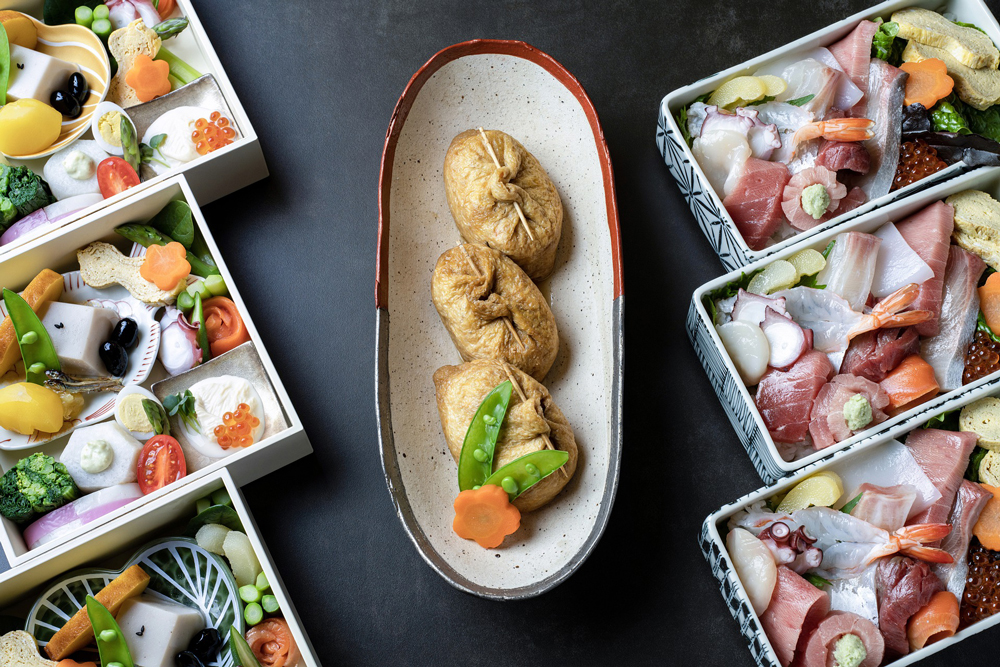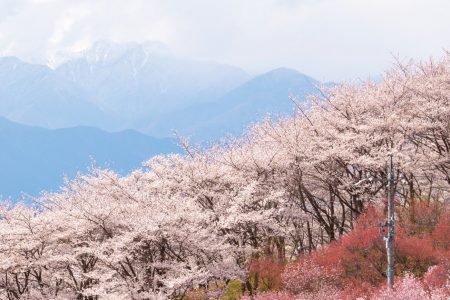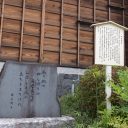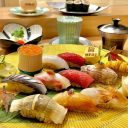
Seasonal cuisine
O-sechi Ryōri, literally ‘a special cuisine for a special season’, refers to the food traditionally eaten for New Year’s Day and the following few days. Just like Australians enjoy special dishes for Christmas Day and other auspicious occasions, the Japanese celebrate the New Year with special food. While, there are a variety of dishes in each locality, but there are a few dishes that are common throughout Japan.
Origin
Up until the Meiji Restoration took place in 1868, Japan had been using the lunar calendar system which originated in China. It is believed that since the Heian period (794-1191), the imperial households held five seasonal rituals and served special cuisine called O-sechiku (御節供) to gods every year. The first important one of the year came to be called O-sechi during the Edo period (1600-1867) when this ritual spread among common people who also celebrated the beginning of new year in the lunar calendar to wish health, happiness and prosperity to families and their descendants or to pray for bumper crops in the coming year by serving special foods at the New Year. At the same time, this tradition played a role in relieving women, who have traditionally been cooking meals throughout the year, from the task of cooking for three days at the beginning of the New Year which are considered to be holidays in Japan. So, even if the New Year is in the middle of winter in Japan, foods are cooked in such a way to be preserved for a few days without needing refrigeration.
Typical O-sechi Ryōri
Osechi Ryōri is usually put into a special food box called Jūbako (a 20cmx20cmx5cm square box), meaning stacked boxes which suggests cumulative wealth. They are usually made of lacquered ware with auspicious designs. Traditionally, five Jūbako are on top of each other with a top lid. Nowadays, three Jūbako with a top lid is more common. O-sechi Ryōri is divided into five types of foods. They serve as well-wishes for the coming year. Each type of food is expected to be placed in designated Jūbako.
(1) The first category is called Iwai-zakana (祝い肴). They are a kind of appetiser. Kazunoko (数の子 herring roe), Kuromame (黒豆 large black soy bean) and Tazukuri (田作りdried anchovy) in the Kantō area or Kazunoko, Kuromame and Tataki-gobō (叩き牛蒡 seared burdock)in the Kansai area belong to this type. They are put into the top Jūbako and represent prosperity for descendants, longevity and bumper crop.
(2) The second category is called Kuchitori (口取り) which is nibbles or finger foods. Kamaboko (蒲鉾 boiled fish paste), Kuri-kinton (栗金団 chestnut and sweet potato) and Datemaki (伊達巻 sweet rolled omelette) are a few examples and they are also put into the top Jūbako.
(3) The third category is called Yakimono (焼き物 cooked seafood). Cooked snapper, yellowtail, lobster and other seafood are put into the second layered Jūbako.
(4) The fourth category is called Sunomono (酢の物 vinegared dish). Kōhaku namasu (紅白膾 vinegared daikon raddish and carrot) is a typical dish and is put into the third Jūbako.
(5) The fifth category is called Nimono (煮物 simmered food). Various cooked vegetables such as carrot, lotus roots and taro are put into the fourth Jūbako. The fifth Jūbako is kept empty for gods to bring in fortune.
Zōni (雑煮 New Year’s soup)
Family members share the O-sechi Ryōri mentioned above together with Zōni which consists of Mochi (餅 rice cake) and chicken with a few vegetables. The soup varies, from miso-soup to clear soup, from one locality to another. However, everyone enjoys this special new year’s dish and hopes that the food brings in health, happiness and prosperity in the new year.
Author
Shunichi Ikeda
BAS Hons (ANU)
MEd (SUNY at Buffalo)
Visiting Fellow, ANU College of Asia and the Pacific











